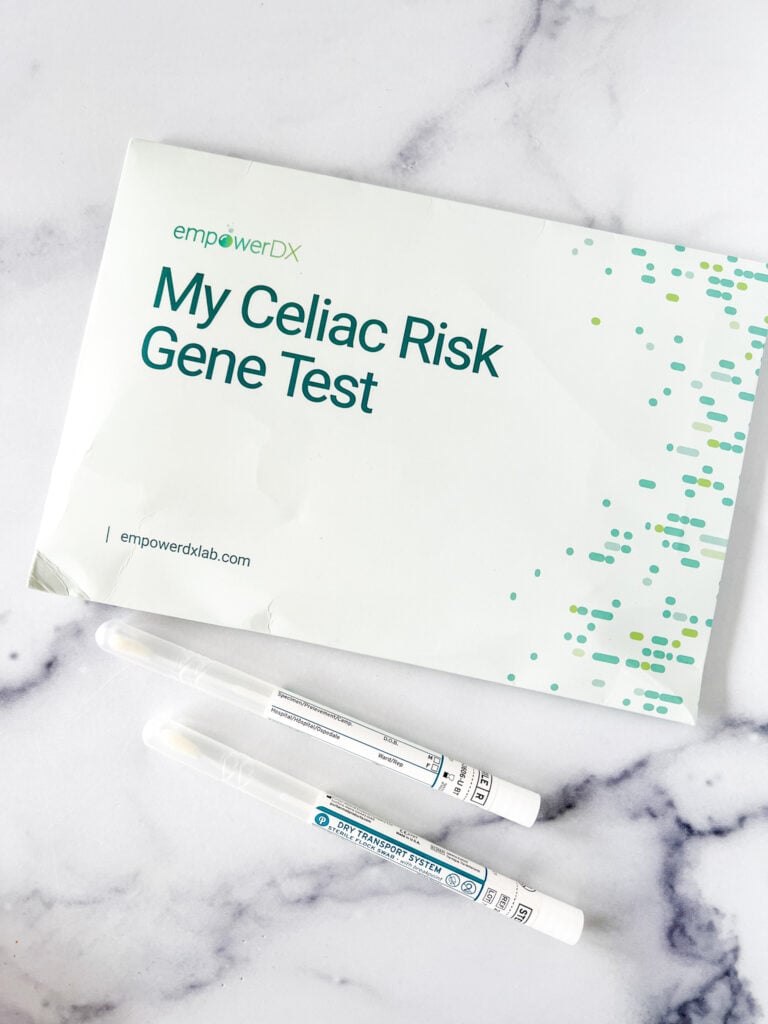
Celiac disease is a serious autoimmune disorder affecting millions of people worldwide.
Despite its prevalence, many people are unfamiliar with the condition and its potential impact on their health and well-being.
People with celiac disease must follow a strict gluten-free diet, free from all sources of gluten, a protein found in wheat, barley, rye, and derivatives of these grains.
There are no treatment options for celiac disease beyond a strict gluten-free diet.
In this article, I’ve compiled 54 celiac disease statistics to provide valuable insights into this common genetic disorder.
Celiac Disease Prevalence & Diagnosis
(1) The overall prevalence of celiac disease is 1 in 133 or 1% of the worldwide population. In the U.S., this adds up to just over 3.3 million people with celiac disease. (Source)
(2) A 2021 study suggests the incidence of celiac disease may be closer to 3%. The incidence of celiac disease by age 10 was 3% in Swedish children and 2.4% in Colorado. The study was based in Colorado. (Source)
(3) The prevalence of celiac disease in first-degree relatives varies considerably (1.6% to 38%) depending on the degree of relation. The pool prevalence of celiac disease among relatives was 7.5%. (Source)
(4) The highest risk of celiac disease among first-degree relatives is in siblings, parents, or children of celiac disease patients. (Source)
(5) The prevalence of celiac disease in second-degree relatives such as cousins, aunts, and uncles is one in 39. (Source)
(6) The rate of new diagnoses of celiac disease has increased by 7.5% annually over the past several decades throughout the Western world, potentially due to diagnostic improvements and environmental factors. (Source)
(7) 90% of children with celiac disease don’t know they have it. (Source)
(8) It can take 3-13 years for a person with celiac disease to get an accurate diagnosis; a diagnostic delay of only 3 years is associated with decreased quality of life, increased doctor visits, sick days, and increased pharmaceutical use. (Source)
(9) A substantial number of people with celiac disease are incorrectly diagnosed with irritable bowel syndrome, leading to an average delay of 17 years in the diagnosis. (Source)
(10) An analysis of the prevalence of celiac disease found that approximately 1.8 million people in the U.S. have celiac disease, although 1.4 million people don’t know they have it and remain undiagnosed. (Source)
(11) Approximately 6% of the U.S. population (about 18-20 million people) are classified as gluten intolerant or have what is known as non-celiac gluten sensitivity. (Source)
(12) Less than one percent of the population (0.63%) have a true wheat allergy. (Source)

Celiac Disease by Gender, Race, Age, and Location
(13) Females are more than twice as likely to be affected by celiac disease than men. (Source)
(14) The prevalence of celiac disease is 4-8 times higher among non-Hispanic whites in comparison to other races. (Source)
(15) Celiac disease is less frequently diagnosed in non-white patients, although the prevalence of celiac disease is similar to the general population (1:48 among blacks, 1:44 among Asians, and 1:66 among Hispanics). (Source)
(16) The median age of a celiac diagnosis is approximately 50 years old. (Source)
(17) One-third of new celiac disease patients are diagnosed over the age of 65. (Source)
(18) 1.83% of Ashkenazi Jews and 1.39% of Sephardic Jews have celiac disease, likely because celiac disease is genetic, and HLA-DQ2 and HLA-DQA genes are more commonly found in Caucasians of European ancestry. (Source)

(19) Punjabi Indians have a significantly higher prevalence of celiac disease (3.08%) compared to Indians from other regions (1.51%). (Source)
(20) The prevalence of celiac disease is lower in patients who identify as South Indian, East Asian, and Hispanic compared to other Americans. (Source)
(21) The highest prevalence rate of celiac disease worldwide has been reported in North Africa, where 5.6% of Saharawi children tested positive for celiac disease. (Source)
(22) In Finland, approximately 2.5% of all adults between the ages of 30 and 64 have been diagnosed with celiac disease. (Source)
Symptoms, Risk Factors & Healing
(23) More than 200 known symptoms are tied to celiac disease; gastrointestinal (GI) disorders are the most common. (Source)
(24) For every celiac patient presenting with GI symptoms, there are 8 patients presenting without GI symptoms. (Source)
(25) 35% of newly diagnosed celiac patients experience chronic diarrhea. (Source)
(26) 53% of non-celiac gluten sensitivity patients presented with non-GI complaints, with the most frequent manifestations including fatigue (64%) and lack of well-being (68%). (Source)
(27) Approximately 41% of adults with celiac disease are asymptomatic and present with no visible symptoms. (Source)
(28) 21% of celiac-positive patients (i.e., patients with positive blood tests) were denied a biopsy by their physician or insurance company. (Source)
(29) Anemia is present in 60-80% of elderly patients with celiac disease. (Source)
(30) The risk of lymphoma is greater after the sixth decade of life, and it occurs most commonly in those diagnosed with celiac disease between 50-80 years of age. (Source)
(31) Dermatitis herpetiformis (DH) or celiac rash occurs in approximately 25% of celiac patients and doubly affects men vs. women. (Source)
(32) 80% of DH patients show intestinal damage consistent with celiac disease, but only 20% report having gastrointestinal symptoms initially. (Source)
(33) More than 90% of celiac patients carry the HLA-DQ2 gene, and 5% carry HLA-DQ8. (Source)
(34) 30-40% of the population carries HLA-DQ2 or DQ8 genes; only three percent of carriers go on to develop celiac disease. (Source)
(35) 20-50% of people with celiac disease are not fully compliant with a gluten-free diet. (Source)
(36) It can take years for the mucosal lining (small intestine lining) to heal in people with celiac disease. One study puts mucosal recovery at 34% after 2 years and 66% after 5 years. (Source)
(37) While most people respond to a gluten-free diet within 6-12 months, 1–2% of celiac patients won’t. This is known as refractory celiac disease. (Source)
(38) Only 25.5% of newly diagnosed celiac patients experience weight loss, and most celiacs are categorized as “overweight” according to a person’s average body mass index. (Source)
(39) 59.4% of newly diagnosed celiac patients have zinc deficiency compared with 33.2% of non-celiacs. (Source)
(40) Newly diagnosed celiac patients have higher nutrient deficiency levels than in control populations, including folate (3.6%), vitamin D (19.0%), copper (6.4%), and vitamin B12 (5.3%). (Source)
(41) The estimated prevalence of celiac disease in people with type 1 diabetes is approximately 6%. (Source)
(42) People with celiac disease have an increased risk of getting the following autoimmune disorders: (Source)
- Addison’s disease (6% increased risk)
- Arthritis (1.5-7.5% increased risk)
- Autoimmune Hepatitis (6-15% increased risk)
- Hashimoto’s Thyroiditis (4-6% increased risk)
- Multiple Sclerosis (MS) (11% increased risk)
- Sjogren’s Syndrome (2-15% increased risk)
(43) Autoimmune disorders are 3 to 10 times more prevalent in celiac patients and 5 times more prevalent in family members of celiac patients. (Source)
Gluten-Free Food
(44) An estimated 3.1 million Americans said they follow a gluten-free diet in 2023. (Source)
(45) One study suggests that 25% of Americans follow a gluten-free diet. (Source)
(46) 72% of Americans following a gluten-free diet are classified as “PWAGs” – people without celiac disease avoiding gluten. (Source)
(47) The global market for gluten-free products is expected to be worth $43.65 billion by 2027. (Source)
(48) The global gluten-free food market was valued at $22.05 billion in 2020. (Source)
(49) Gluten-free food sales are highest in North America, followed by Europe. (Source)
(50) Gluten-free food purchases have grown 136% from 2013-2015. (Source)
(51) Millennials are the largest purchasers of gluten-free products. (Source)
(52) 32% of restaurant food labeled “gluten-free” contains gluten. (Source)
(53) Gluten-free food costs 183% more on average than non-GF foods. (Source)
(54) The GFCO has certified more than 60,000 products globally as “gluten-free.” (Source)
More Information
Curious if you have celiac disease? Take this at-home celiac screening test ASAP and BEFORE you go gluten-free.
Need help going gluten-free fast? Enroll in my SIGNATURE Gluten-Free Course.
Additional Articles:
Leave a Comment